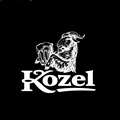Four unique babies from Prague Zoo
22. 09. 2015
In 2015 Prague Zoo was named the 4th best zoo of the world and during the same year four unique babies were born here. Meet the first Silvery Gibbon born in Czechia, a tapir with American roots, a descendant of popular Aardvark female Kvída and the grandson of famous fur seal Gaston!

Toby is the third young of Lowland Tapir in the history of Prague breeding.
Toby (Lowland Tapir)
Toby is the third young of Lowland Tapir in the history of Prague breeding. He was born on the 19th of May to his parents Ivana and Tex. Tex comes from USA and he is extremely valuable for European breeding.
We had to wait 13 months to Toby´s birth - this is how long the pregnancy takes with tapirs. The delivery went smoothly, but it happened outdoors, where the weather was bit too cold for the new born tapir baby. So the keepers had to move the mother with the baby inside of the stables as soon as possible. There the mother carefully cleaned the baby and soon they were laying together in straw and the little male was drinking happily.
Based on earlier experiences the keepers decided to leave Tex, the male, with the family. He is very attached to Ivana and he would suffer being separated from her; and he had treated his last descendent Sam well. Also in this case Tex was very calm with the young since the beginning and he was interested in it.
Lowland Tapirs were bred in Prague Zoo between 1950 and 1957 and then after a long break only after 2004, when Ivana and Christian arrived. Ivana was born in Jihlava Zoo on the 7th of March and with Christian they became parents of the male Heřmánek, the very first Lowland Tapir born in Prague Zoo. Tex became Ivana´s partner in 2011 and so far they have had two sons: Sam in 2012 and Toby in 2015.
Mamut (South African Fur Seal)
A new calf extended the Prague group of South African Fur Seals at the end of May, 2015. Abeba, the female, delivered her third baby, a male, in the morning of the 27th of May.
South African Fur Seals have been living in Prague Zoo since 1991, when a group of grown-up youngs arrived to our zoo.
The experienced female Abeba is the mother of the baby; she has already reared two calves. First was Bert, born in 2011, and when he was two years old he moved to Belgrade Zoo in Serbia. The younger, Wendy, a female born in 2013, is still living in Prague Zoo.
The youngest addition to the seal family spent the first two months with his mother Abeba in the breeding facility, where he step-by-step became familiar with water in the safe environment of a shallow pool. This was because seal calves cannot swim when they are born. But at the end of August the young male was moving under the water surface with such confidence that we could let him go to the large pool together with the other seals. You can see him there when visiting our zoo.
Silvery Gibbon
The very first baby of Silvery Gibbon in Czech and Slovak Zoos was born in Prague Zoo at the end of July.
The mother of the rare baby is AlangAlang, the female; Filip, the male is the father. For both of them it is their first descendent, and in spite of that the keepers decided not to intervene and only anxiously waited to learn how the parents would deal with the new situation. They were excellent. Ten-year old AlamgAlang took care for the baby from the first moments with unbelievable confidence and Filip, also 10, proved to be a perfect father. He carefully supervised his partner and the baby from the distance and he gave AlangAlang sufficient space.
After several days we discovered that the baby is male. With other species of primates, where only one adult male is surrounded by several females (while the others remain on the shelf), birth a male could in future mean that we might have problems with finding a proper place for him. But Gibbons live in pairs, therefore both sexes are welcomed equally. And it is not an issue at all with endangered Silvery Gibbons, of which about 2,500 remains in the wild and only less than 70 specimen are living in captivity.
Gibbons make a partnership for life and select their counterpart very carefully. Fortunately AlangAlang, the female, and Flip, the male, liked each other since very beginning. The baby was born only eight months after the couple arrived to Prague, which means that AlangAlang became pregnant immediately after meeting her partner. And as this couple turned to be harmonic, we can hope that there will be more silver babies in future.
Aardvark
One of the most expected additions of this summer was born on Sunday, the 26th of July, the descendent of our Aardvark female Kvída. And he came two months earlier than the keepers originally expected.
Rearing Aardvarks always has been a very difficult issue and the support of keepers is necessary in zoos. Ten-year-old Kvída already had become mother twice, but the young were too small and in spite of all the effort they did not survive the first four days. Also the third of Kvída´s young, whose father is again Draco, born in 2009 in Colchester, was born a bit smaller. Weighting 1,335 g it had a better chance to survive. On top of that Kvída was showing interest in her young, she was cleaning him and laid down patiently, so the baby could drink. But it did not happen.
So the marathon of nonstop care started, when six keepers were alternating caring for the baby day and night. They were manually squirting the colostrum (the "first milk" which contains matters important for development of the babies´ immune system) and fed it to the baby from a syringe together with artificial milk. At the same time, before each feeding they were trying to see if the baby would drink from mother, but at the beginning with no success. The change came only after eight days ,when the little Aardvark started drinking from his mother and it became possible to leave him with her during the day.
For the entire first month the keepers had to keep watch over the baby, to prevent Kvída smothering him, and to wake it up for feeding, weigh it every two hours to make sure that it was not losing weight and, if necessary, feed him with artificial milk. Only at the end of August, when the little Aardvark weighted almost four-and-a-half kilos, was it possible to ease up with the control of regular drinking. And during the last holidays week the baby was finally presented to visitors.
{MediaGallery}3003-four-unique-babies-from-prague-zoo{/MediaGallery}








